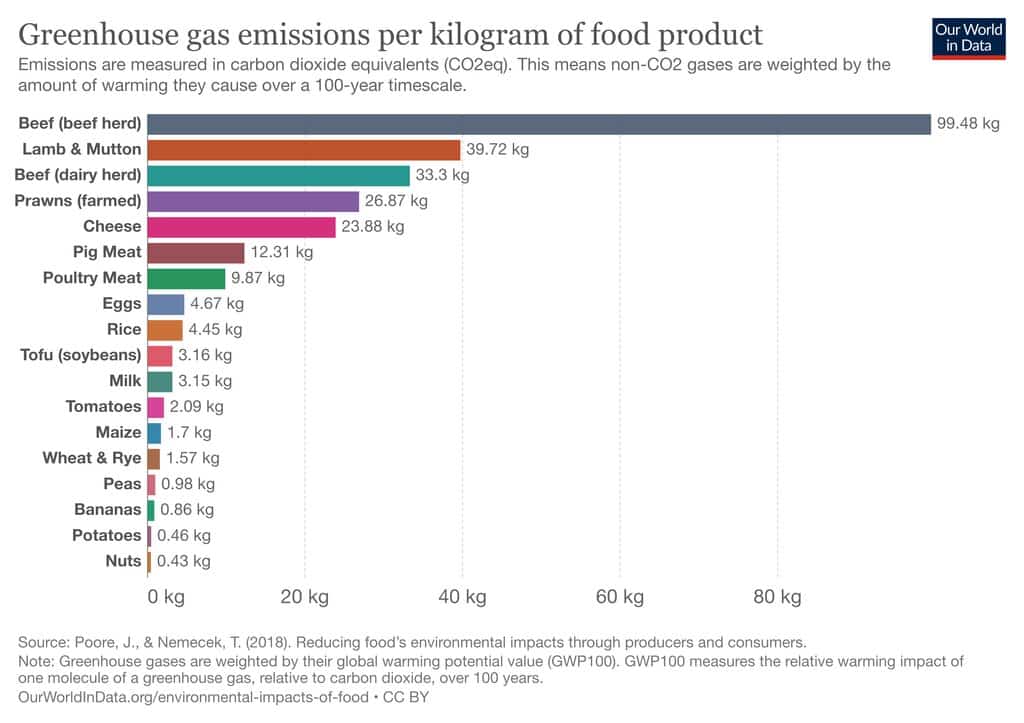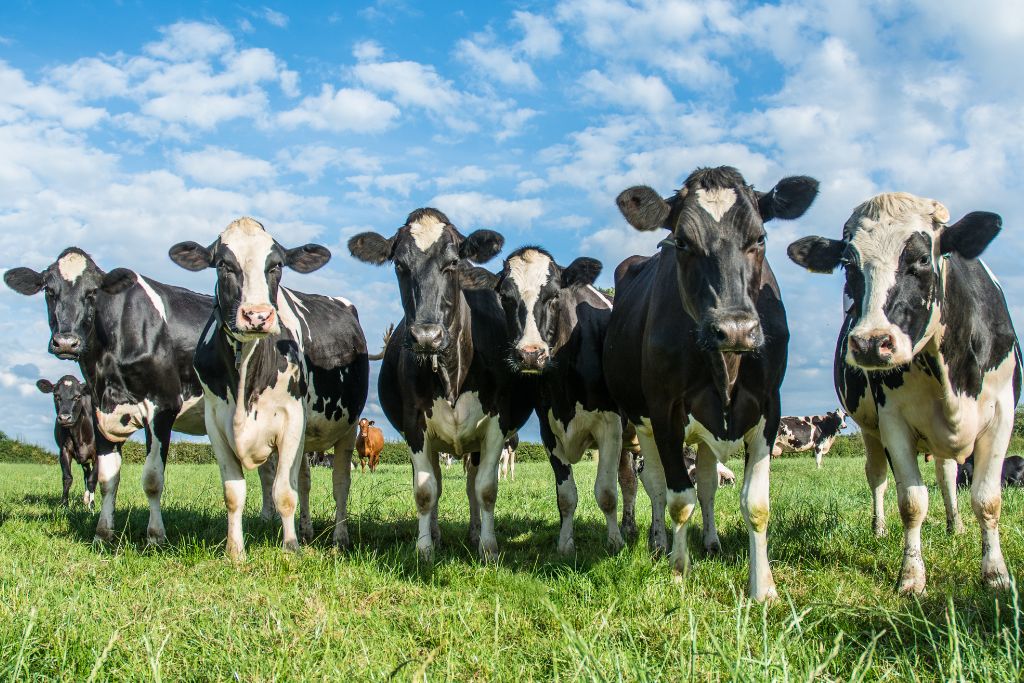When it comes to the causes of global warming, methane does not get as much attention as carbon dioxide (CO2), yet addressing it should not only be our main concern but is also crucial as we seek to achieve a net-zero world. Here are 3 strategies we can implement to cut methane emissions from cows.
—
Methane attracts the sun’s radiation and evidence found that this gas traps heat at least 80 times more effectively than carbon during a 20-year period. So, in about 100 years, the global warming potential of this gas will 28 times greater than that of CO2. The fact that humans are currently releasing this extremely potent and damaging gas at a rate that is faster than in at least 800,000 years may surprise many. Gas and oil pipelines, landfills, and cows are just some of the sources that release methane into the atmosphere.
For these reasons, methane is undoubtedly a significant contributor to the climate crisis. Therefore, cutting it off is an effective measure that needs to be implemented along with others in the fight against global warming.
Methane Emissions From Cows
Several studies found that livestock and meat production are huge contributors to global greenhouse gas emissions. In 2018, environmental researcher Joseph Poore and agricultural engineer Thomas Nemecek published a study in the journal Science on the global impact of food production.
Analysing data from about 38,000 commercial farms in 119 countries, the scientists calculated that 26% of global emissions come from food production and more than half of these – approximately 58% – come from livestock. More specifically, the team found that 50% of the emissions came from livestock operations, specifically beef and lamb production.
Cows produce methane as their digestive systems process food. In fact, ruminants can produce up to 500 liters of methane per day. Although this amount is estimated to contribute to less than 2% of global warming, methane stays in the atmosphere for about 12 years, much less than CO2.
The Best Ways to Reduce Methane Emissions from Cows
1. Switching to A Plant-Based Diet
According to several studies, the main anthropogenic emissions are methane, CO2, nitrogen dioxide (N2O), and sulphur dioxide (SO2). These emissions are significantly influenced by the production and consumption of dairy and meat products. For this reason, experts advise everyone to convert to a plant-based diet whenever possible.
In general, plant-based food production is less polluting than meat production. For example, one kilogram of peas produces one kilogram of greenhouse gases (GHG), whereas the same quantity of beef emits nearly 6kg of GHG.

Greenhouse Gas Emissions from Food (Source: Our World in Data)
2. Altering Animal Feed to Cut Emissions from Cows
Many people cannot avoid eating meat, especially those living in developing countries where other protein sources are scarce. Moreover, even if the world switched to a vegan diet overnight, it would not be enough to solve the issue.
For this reason, scientists are developing methods to reduce the impact of livestock. For instance, UC Davis researchers are attempting to make cows emit “less gas” in order to lower their emissions. In 2019, they conducted an experiment by adding 1% of easily absorbed red seaweed to cows’ diets. This resulted in a staggering 60% reduction in methane emissions.
Similarly, the Dutch medical business Royal DSM has developed a chemical that limits methane production. The company hopes to include the substance in animal feed in the future to help farmers limit the methane that is created during digestion. Meanwhile, researchers in New Zealand have identified the genetics of a microorganism that lives in the stomachs of cattle specialising in methane production. If we can “attack” these bacteria with a vaccine – they claim – we will have an effective anti-methane vaccine.
Less complicated options include selective breeding. Eco-friendly breeds are the ones that develop more quickly. The cattle breeds being recommended grow faster, require less feed and produce a significant amount of milk. For now, this is the best approach for farmers and livestock companies until anti-methane vaccines and anti-methane food reaches the global market, or until more people worldwide switch to artificial or plant-based meat products.
3. Introduce A Methane Tax
On June 8, the New Zealand government announced a draft plan to tax cow and sheep farms to address one of the largest sources of greenhouse gas emissions in the country. If the proposal becomes a reality, New Zealand – the world’s largest agricultural exporter, will become the first country to make farmers pay taxes on the emissions of livestock animals.
While there are just 5 million people living in New Zealand, there are 26 million sheep and 10 million cows. Methane emissions from agriculture are thought to make up approximately half of all greenhouse gas emissions. However, the nation’s carbon trading program has so far exempted agricultural emissions. This has led to criticism of the government’s dedication to mitigating global warming.
Farmers will start being charged for their emissions as of 2025, according to the draught plan created by the government and farmers’ community leaders. Using a formula for total emissions, emissions will be categorised according to how long they last. Consumers will eventually pay the taxes and fees, which may result in a price increase for dairy and meat.
The proposal also outlines actions to motivate farmers to cut emissions by incorporating food additives into animal diets to cut methane emissions. In addition, you can lessen emissions by planting trees on your property. The money obtained from the collection of fees will be utilised to fund investments in agricultural consulting and research.
You might also like: Can We Widely Adopt A Methane Tax to Cut the Greenhouse Gas?
Global Goal Until 2025
The IPCC report notes that methane production has increased rapidly since 2007 due to agricultural activities – especially in West Asia, East Asia, Brazil, and North Africa – as well as fossil fuel burning in North America. In other words, scientists believe that humans and cattle are the main cause of increasing methane pollution.
Unfortunately, countries have not done much to address this situation. Under former President Donald Trump, the US has dropped a regulation that required oil companies to monitor and address methane leaks. China has a market for trading carbon, but it does little to reduce methane emissions.
Environmentalists say that we must switch as quickly as possible from coal, gas, and oil to clean energy sources but the world cannot afford to wait for this transition. A coalition of 134 health and environmental organisations has set a global goal: cut methane pollution in the gas and oil industries by 65% by 2025.
The benefits of limiting methane will be important as the world continues to gamble with climate. Tackling methane emissions in many industries, including gas and oil, agriculture, and waste could slow global warming by up to 30%. Even though it may not seem like much, a quarter-degree Celsius increase by 2025 could mitigate a number of catastrophic effects.
You might also like: Methane in the Atmosphere Hit Record High Levels in 2021


















